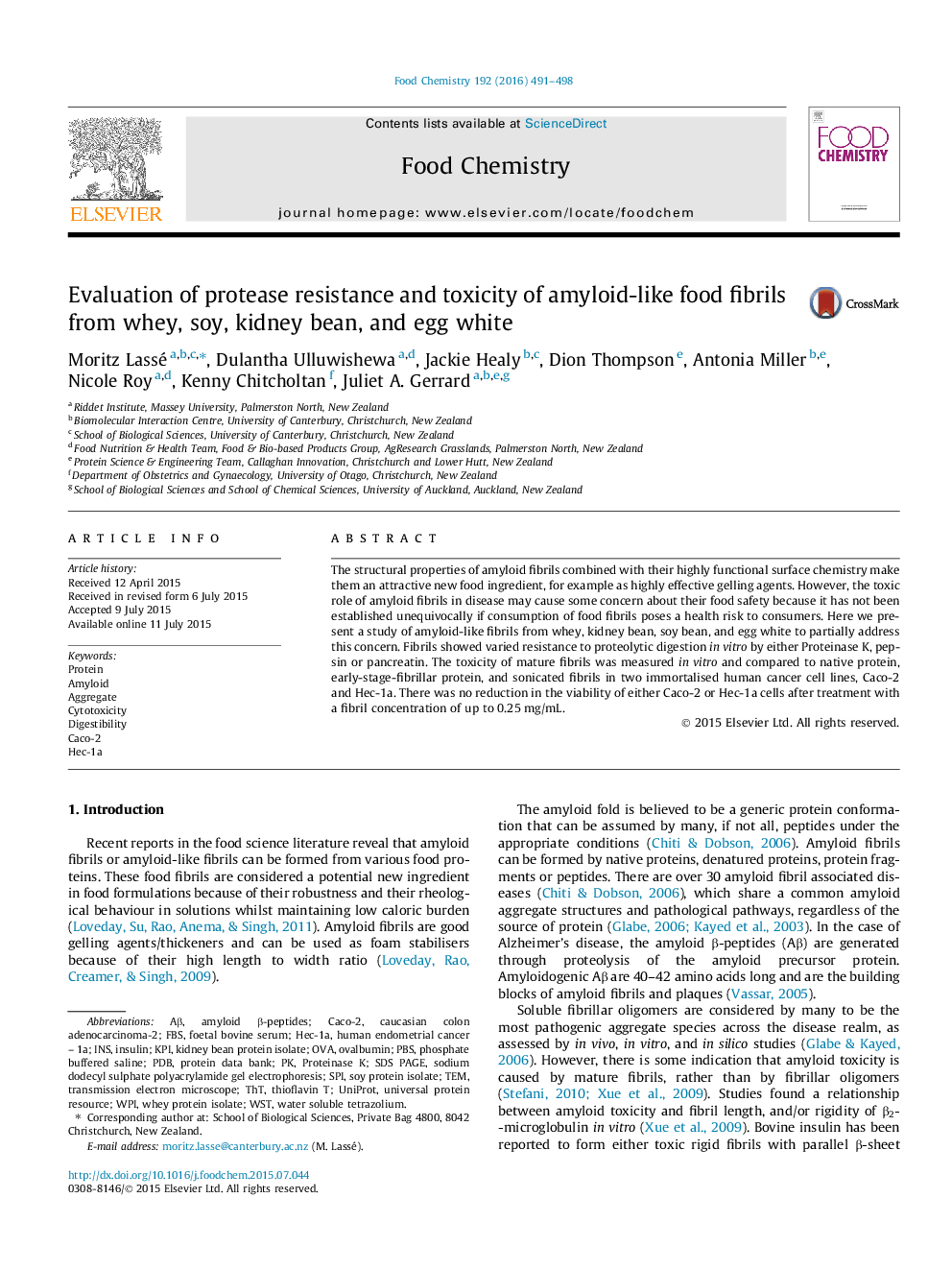| Article ID | Journal | Published Year | Pages | File Type |
|---|---|---|---|---|
| 7589966 | Food Chemistry | 2016 | 8 Pages |
Abstract
The structural properties of amyloid fibrils combined with their highly functional surface chemistry make them an attractive new food ingredient, for example as highly effective gelling agents. However, the toxic role of amyloid fibrils in disease may cause some concern about their food safety because it has not been established unequivocally if consumption of food fibrils poses a health risk to consumers. Here we present a study of amyloid-like fibrils from whey, kidney bean, soy bean, and egg white to partially address this concern. Fibrils showed varied resistance to proteolytic digestion in vitro by either Proteinase K, pepsin or pancreatin. The toxicity of mature fibrils was measured in vitro and compared to native protein, early-stage-fibrillar protein, and sonicated fibrils in two immortalised human cancer cell lines, Caco-2 and Hec-1a. There was no reduction in the viability of either Caco-2 or Hec-1a cells after treatment with a fibril concentration of up to 0.25Â mg/mL.
Keywords
SPIWSTUniProtOVASDS PAGECaco-2AβKidney bean protein isolatePDBwater soluble tetrazoliumKPIWPIPBSFBSINSAmyloidsodium dodecyl sulphate polyacrylamide gel electrophoresisinsulinOvalbuminTemThTAggregateThioflavin TSoy protein isolatefoetal bovine serumCytotoxicityPhosphate buffered salineDigestibilityuniversal protein resourceTransmission electron microscopeProteinProtein Data BankWhey protein isolateProteinase K
Related Topics
Physical Sciences and Engineering
Chemistry
Analytical Chemistry
Authors
Moritz Lassé, Dulantha Ulluwishewa, Jackie Healy, Dion Thompson, Antonia Miller, Nicole Roy, Kenny Chitcholtan, Juliet A. Gerrard,
